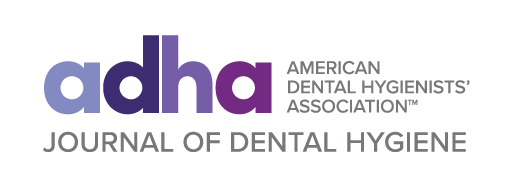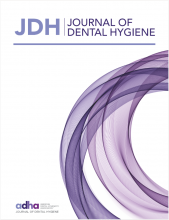

Dental hygienists are preventive oral health specialists for people of all ages. Dental hygiene education, practice, and research focuses on the best ways to meet every person’s oral care needs. The profession’s approach to oral care is compassionate, individualized, and evidence based. The dental hygiene literature contains current research and clinical practice techniques to support dental hygiene practice across populations and settings. Dental hygienists are taught to focus on the person not the disease or health condition. Yet, dental hygienists like so many others in our society, can unknowingly perpetuate ageist stereotypes.
Dental hygienists aim to provide effective oral care to people of any age, however it can be undermined by inadvertent ageism. Ageism is prevalent throughout health care and across our society. Dismantling ageism requires that dental hygienists learn more about ageism and its effects on health, wellbeing, and society.
Ageism is discrimination based on perceptions or knowledge of an individual’s or group’s chronological age. It includes mistaken thoughts, which are stereotypes, emotional sentiments, which are prejudices, and actions which, when based in stereotype and prejudice, are discrimination.1 Ageist thinking, feelings, and actions are discriminatory and harmful to health and wellbeing.2-5
Ageism in health care commonly emerges in assessments and decisions as well as interventions. For example, a dental hygienist may create a plan of care for an older patient based solely on their chronological age rather than what matters to them and their functional capacities. Older people may be presumed to be functionally unable to complete oral care only because of their age. Similarly, oral health professionals may change how they communicate with older patients in ways that are not based on evidence, risking unintended consequences. For instance, the practice of slowing our speech and using simple words with a singsong cadence is called elderspeak. This also includes referring to older patients as sweetie, honey, or dear and mimics babytalk. Using elderspeak is generally perceived negatively by older people.6
Stereotypes, prejudices, and discrimination are ageist behaviors expressed by health professionals and lay people alike and convey negative ideas about growing older and old age. Ageism, whether individually or structurally expressed, is associated with poorer physical and mental health.1-7 Ageism is also costly in human and financial terms, showing strong associations with ill health, lower function, and increased costs of health care.5
Ageism can be effectively dismantled through structural interventions. The World Health Organization (WHO) emphasizes that eliminating ageism requires targeted policies that include organizational and legislative measures, intergenerational experiences, and education.1 The dental hygiene profession, like other health professions, has an opportunity to help eliminate ageism from health care and our society. Dental hygiene education must include content about ageism and strategies to overcome it in clinical practice, research, and education.
In education, greater exposure to older individuals during clinical experiences provides intergenerational experiences vital to overcoming ageism. These clinical encounters allow future dental hygienists to learn about respectful interactions with older people, oral care issues that may occur as a person gets older, and optimal ways to approach oral care across the life span. These patient care experiences bring classroom learning about ageism to real life situations, and allow students to apply techniques on ways to avoid age-biased behavior.
Dental hygiene research must likewise strive to avoid age-bias beginning from the study design through to publication. Researchers, supported by editors and peer reviewers, must ensure the use of age-neutral language (such as older adults, older people, or using specific age ranges like adults aged sixty-five and older) when writing protocols and publishing results. Also, journal editors and reviewers must apply exacting standards to ensure manuscripts are free from discriminatory ageist language.
There are many easily accessible resources for learning about how to recognize and overcome ageism. Among our favorite sources for guidance are:
Association of Health Care Journalists 10 Tips For Eliminating Ageist Language From Your Stories
How to Avoid Ageist Language in Aging Research? An Overview and Guidelines, Activities, Adaptation & Aging
National Institute of Health Blog Don’t Call Me “Old”: Avoiding Ageism When Writing About Aging
Older People’s Commissioner for Wales Tip Sheet
The Elm The Necessity of Age-Inclusive Language in Our Daily Lives
Washington University in St. Louis Institute for Public Health Blog Age-inclusive language: Are You Using It in Your Writing and Everyday Speech?
WHO Global Campaign to Combat Ageism Toolkit
WHO Quick Guide to Avoid Ageism in Communication
We hope that you will join us in striving to overcome ageism in healthcare and across society. Together, we can achieve age-friendly dental hygiene!
- Copyright © 2025 The American Dental Hygienists’ Association
This article is open access and may not be copied, distributed or modified without written permission from the American Dental Hygienists’ Association.








